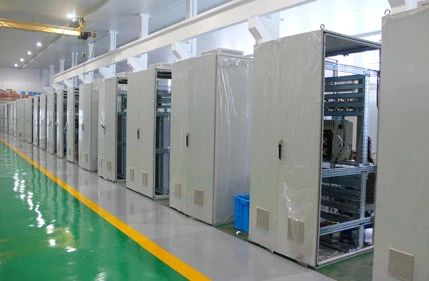
Automatic Gauge Control Cold Rolling Mill: Hydraulic AGC?
Inside AGC for Strip Mills: What Matters in 2025
If you work around mills long enough, you develop an instinct for what makes a line hum. The leap from “good” to “world‑class” often starts with a dependable automatic gauge control cold rolling mill package—fast hydraulics, sane algorithms, and a team that will tune at 2 a.m. on a Saturday if needed. YWLX’s Agc System For Hot/Cold Strip Rolling Mill is one I’ve seen in the field more than once—and, to be honest, it’s earned a reputation for practical accuracy rather than brochure-ware.

Industry snapshot and why it matters
Two macro trends: thinner gauges with tougher alloys, and greener operations with fewer unplanned roll changes. In fact, many customers say the biggest payoff from AGC lately is scrap avoidance and coil-to-coil consistency. With smarter feed-forward models, we’re seeing better head-end catch and fewer tail-end surprises. It seems that hybrid mass‑flow + roll‑force models are winning, with flatness integration creeping in as lines digitize.
YWLX at a glance
Origin: No.1518, LAR Valley Int’l, Guangwai Avenue, Xicheng District, Beijing, 100055. YWLX has been on AGC since 2003; their systems run across hot/cold strip mills, temper and skin‑pass lines at home and overseas. The pitch is straightforward: precise strip gauge with serviceable hardware and field‑savvy commissioning.
Typical specifications (real-world use may vary)
| Product | Agc System For Hot/Cold Strip Rolling Mill |
| Control modes | Feed‑forward, mass‑flow, roll‑force (BISRA‑type), adaptive feedback, mill‑stretch compensation |
| Thickness accuracy | ≈ ±6–12 μm on cold strip at stable speeds; ±0.5–1.0% typical |
| Sampling/response | Controller loop ≤1 ms; HGC cylinder step response ≈ 10–20 ms |
| Sensors | X‑ray/Isotope thickness gauges, load cells, speed encoders, thermal/roll crowning inputs |
| Interfaces | Ethernet/IP, Profinet, OPC UA; legacy I/O supported |
| Service life | Main control racks 10–15 years; servo valves 5–7 years (typical duty) |
| Certifications | ISO 9001 QMS; CE; EMC per IEC 61000‑6‑2/4; safety concept aligned with IEC 61508 |
Process flow, materials, and testing
Materials: low‑carbon steels, HSLA, stainless, aluminum strip. Methods: head‑end feed‑forward from entry gauge and roll gap model; closed‑loop feedback via exit gauge; mass‑flow blending during transients; roll‑force model correction for temperature and mill stretch. Testing standards customers reference: EN 10131 (cold‑rolled flatness/tolerances), ISO 9445 (cold‑rolled narrow strip), ASTM A568/A568M (sheet tolerances), and plant EMC/safety audits per IEC 61000 and IEC 61508.
Acceptance test snapshot (a recent cold‑mill retrofit): Cpk for thickness ≥1.67 on 0.25–0.35 mm gauge; coil yield up by ≈0.8%; off‑gauge length cut by ≈18% over four weeks. Not perfect, but solid.
Where it’s used
Cold tandem mills, single‑stand reverse mills, temper mills, skin‑pass lines, and hot strip finishing stands. In packaging steel and battery foil, the automatic gauge control cold rolling mill loop must stay tight during speed ramps—this is where tuned feed‑forward earns its keep.
Vendor comparison (indicative)
| Vendor | Core approach | Typical accuracy | Retrofit | Lead time |
|---|---|---|---|---|
| YWLX | Mass‑flow + roll‑force, adaptive tuning | ±6–12 μm (cold) | High; legacy signals supported | ≈ 8–16 weeks |
| ABB | Integrated gauge/flatness suite | ±5–10 μm | High | ≈ 12–24 weeks |
| Primetals | Model predictive + flatness integration | ±5–10 μm | Medium‑High | ≈ 16–28 weeks |
Note: figures are indicative; actuals depend on mill stiffness, gauges, rolls, and, frankly, how well the commissioning week goes.
Customization and integration
YWLX offers retrofits with existing X‑ray/Isotope gauges, load cells, and older PLCs. Options: coil recipe databases, Smart start/stop logic, and data hooks to MES/ERP via OPC UA. For legacy stands, cylinder and servo‑valve upgrades usually unlock the last mile of automatic gauge control cold rolling mill performance.
Field notes and feedback
A stamper in Southeast Asia told me their temper mill finally “stopped chasing its tail” after AGC tuning—off‑gauge complaints dropped by about a third. Another stainless producer reported smoother head/tail transitions and fewer coil reclassifications. Not every line hits the same numbers, but the direction is consistent.
References
- IEC 61000-6-2/6-4 Electromagnetic compatibility standards for industrial environments.
- IEC 61508 Functional safety of electrical/electronic/programmable electronic systems.
- EN 10131 Cold rolled uncoated low carbon steel flat products – tolerances.
- ISO 9445 Cold‑rolled stainless steel narrow strip – tolerances.
- ASTM A568/A568M Standard Specification for Steel, Sheet, Carbon, and High‑Strength, Low‑Alloy.
-
YWLX’s 1450mm Six-Hi Reversing Mill Goes Live in BangladeshNewsNov.24,2025
-
Adjusting Roll Gap in 6Hi Reversing Cold Rolling Mill for Thin StripNewsNov.13,2025
-
Quality Control Standards for Automatic Gauge Control in Strip RollingNewsNov.13,2025
-
Effect of Skin Pass Rolling on Metal DuctilityNewsNov.13,2025
-
Key Components of a Modern TempermillNewsNov.13,2025
-
Common Wear Patterns of Work Roll in Tandem Cold Mill OperationsNewsNov.13,2025
-
Revolutionary Skin Pass Rolling Technology for Enhanced Steel QualityNewsNov.04,2025










